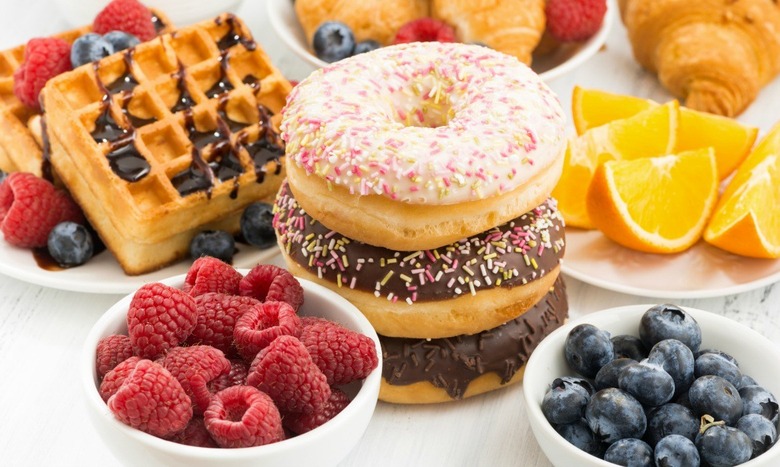How To Consume Sugar Without Crushing Your Diet
There's a reason that soda and energy drinks have become taboo in American food culture. These drinks, along with sugary snacks like candy, cookies, doughnuts, and everything else you've ever felt slightly guilty eating, are a hit in many states across the country. Children and adults alike frequently reach for readily available snacks and beverages with added sugar, and the result has been America's placement as the number one global consumer of sugar.
Click here to see 27 things (including soda) that doctors refuse to ingest.
So why does this matter? For one thing, sugary food and drinks are often paired with overeating. Combined, low-quality foods with no lack of added sugars and the tendency to overeat said foods have resulted in the American obesity epidemic. Obesity and diabetes, as well as other factors like depleted drive and lowered moods, can stem from the abuse and overuse of sugar. With this in mind, why on earth would anyone want to advocate for the inclusion of sugar into healthy diets?
Humans need carbohydrates to properly function, grow, and fuel myriad other bodily functions. You'll find foods with natural sugars listed in lists of heart-healthy foods — there's no reason to completely avoid sugar. Sugar differentiation is a skill that is easy to acquire and necessary when trying to figure out the role of this sweet carbohydrate in your own diet.
We can't tell you enough how wildly detrimental to your health the sugars in candies, sodas, and energy drinks are. Part of this is because they lack the nutritional perks that fruits and vegetables tote. Instead of reaching for a sugary caffeinated drink in the morning, consider reaching for a healthy fruit. What you're really selecting between are the different forms of sugar. The most basic building blocks of a carbohydrate are monosaccharides. One of these, glucose, is arguably the most important variant of sugar and it exists in the blood. Most of the food we eat is converted to glucose by our body. Fructose, another monosaccharide, is found naturally in fruits and vegetables, and it's added to things like soda. Unlike glucose, fructose consumption has a higher likelihood to lead to fat production. Lastly, there's sucrose, or table sugar. Also found naturally in foods, sucrose is a disaccharide, meaning that it's composed of two monosaccharides. This is broken down into its separate components (fructose and glucose) by the body.
Seeing as glucose is what your body wants to primarily use to fuel itself, it goes to this sugar first. If your body is fully fueled by glucose, any excess fructose will be stored as fat. Charts like this are valuable tools in seeing which sugars are present in the foods you're eating. As you can see, basic fruits like apples, bananas, dates, and oranges contain a fair amount of glucose. Seeing as this is the energy source your body uses most, tossing a few of these fruits into your diet can help you cure your sugar addiction without completely derailing your diet.
Click here to see why doctors won't consume soda, cotton candy, and more.
